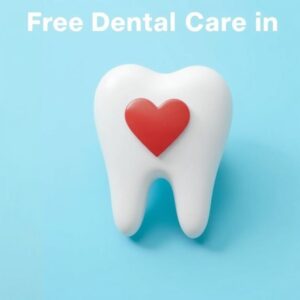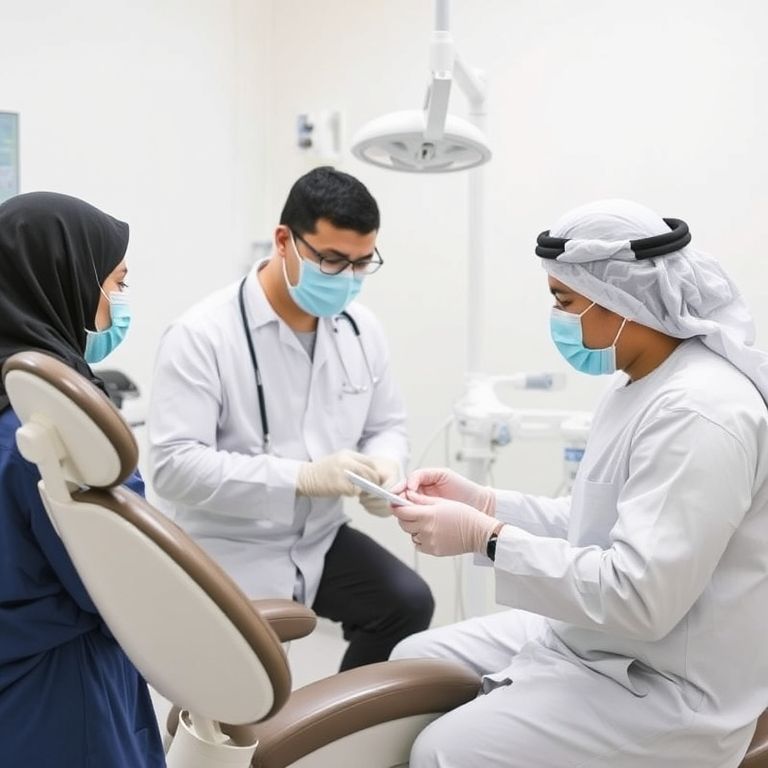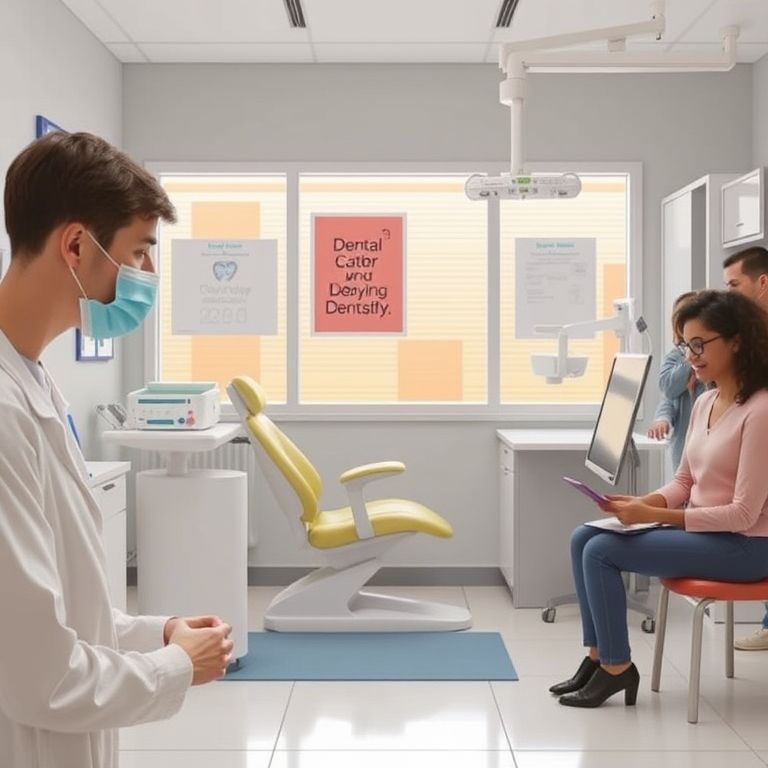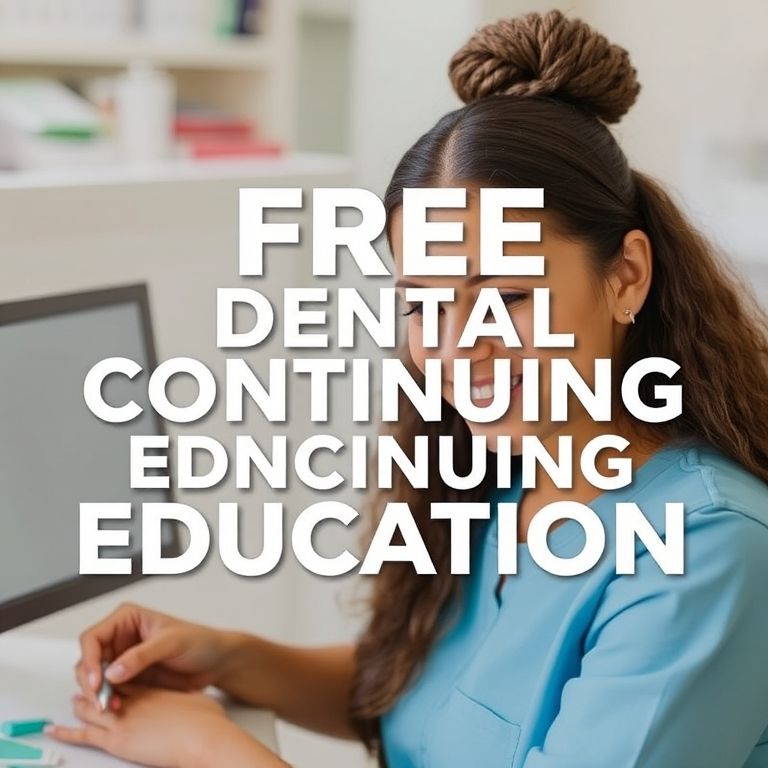A Comprehensive Guide to Navigating Free Dental Care in Alabama
The smile is a universal language, a signal of joy, confidence, and health. Yet, for hundreds of thousands of Alabamians, that smile is a source of pain, shame, and anxiety. Behind the warm, welcoming facade of the Heart of Dixie lies a silent and pervasive public health crisis: the lack of access to affordable dental care. In a state where poverty rates stubbornly outpace the national average and where Medicaid dental benefits for adults are virtually non-existent, a routine toothache can spiral into a medical emergency, a barrier to employment, and a sentence to a life of chronic pain. The consequences are not merely individual; they ripple through communities, affecting children’s ability to learn in school, adults’ capacity to work, and the overall economic vitality of the state.
This article is not just a directory of resources; it is a deep dive into the ecosystem of dental despair and the beacons of hope that strive to combat it. We will dissect the systemic roots of the problem, from the “dental deserts” that span rural counties to the complex web of policy and funding that leaves the most vulnerable behind. More importantly, this guide serves as a lifeline. We will meticulously map the landscape of free and low-cost dental care across Alabama, providing detailed information on charity clinics, mobile dental units, university-led programs, and emergency resources. Our mission is to empower you with knowledge—transforming the overwhelming quest for care into a navigable path toward healing and health. The journey to understanding and accessing dental care in Alabama begins here, by staring unflinchingly at the problem and illuminating every available solution.

1. Understanding the Scope of the Problem: Why Alabama?
To understand the desperate need for free dental care in Alabama, one must first grasp the perfect storm of economic, geographic, and policy factors that have created one of the most challenging oral health landscapes in the United States.
The Statistics of Pain: Dental Health Disparities in the State
The numbers tell a stark story. According to data from the Alabama Department of Public Health and national organizations like the Centers for Disease Control and Prevention (CDC), Alabama consistently ranks near the bottom for key oral health indicators. A significant portion of the state’s adult population has lost six or more teeth due to dental decay or gum disease, a rate far exceeding the national average. Tooth decay remains the most common chronic disease among Alabama children, despite being almost entirely preventable. These statistics are not merely abstract data points; they represent millions of hours of pain, missed school days for children, and missed workdays for adults, creating a significant drag on the state’s productivity and quality of life.
The Adult Medicaid Gap: The Single Biggest Driver of the Crisis
Perhaps the most critical factor in Alabama’s dental care crisis is the state’s Medicaid program. While the Alabama Medicaid Agency provides comprehensive dental benefits for children under the age of 21 (through the ALL Kids program), its coverage for adults is starkly different. For individuals over 21, Medicaid dental coverage is essentially limited to emergency extractions and emergency pain management in a hospital setting. This means that for a low-income adult in Alabama, Medicaid will pay to have a severely infected tooth pulled, but it will not pay for a filling to save that same tooth, a cleaning to prevent gum disease, or a denture to replace extracted teeth.
This policy creates a brutal cycle. A minor cavity, left untreated due to cost, progresses into a severe infection. The patient, now in excruciating pain, visits a hospital ER, where they receive antibiotics and painkillers—a temporary and costly solution. When the infection returns, the only “covered” option is extraction. This “drill and fill” versus “wait and pull” disparity is a primary reason why Alabama has such a high rate of edentulism (toothlessness) among its senior and low-income populations. It is a system designed for crisis management, not health maintenance.
Geographic Barriers: Dental Deserts in Rural Alabama
Alabama’s rural character compounds the problem of financial access. Many of the state’s 67 counties are classified as “dental health professional shortage areas” (HPSAs) by the federal government. In these “dental deserts,” there are simply too few dentists to serve the population. Residents may need to travel 50, 75, or even 100 miles to reach the nearest dental provider. For those without reliable transportation, a full tank of gas, or the ability to take a full day off work, this geographic barrier is as formidable as a financial one. The concentration of dentists in urban hubs like Birmingham, Huntsville, and Mobile leaves vast swathes of the state, particularly the Black Belt region, critically underserved.
The Ripple Effect: How Poor Oral Health Impacts Overall Health, Education, and Employment
The impact of poor oral health extends far beyond the mouth. A growing body of medical research has established strong links between chronic oral infections and systemic health problems, including:
-
Cardiovascular Disease: Bacteria from inflamed gums can enter the bloodstream and travel to the heart, contributing to atherosclerosis (clogged arteries) and endocarditis (infection of the inner lining of the heart).
-
Diabetes: Periodontal disease can make blood sugar harder to control, and diabetes, in turn, can increase the risk of gum disease, creating a vicious cycle.
-
Respiratory Infections: Bacteria in the mouth can be aspirated into the lungs, leading to pneumonia, particularly in older adults.
-
Adverse Pregnancy Outcomes: Severe gum disease has been linked to preterm birth and low birth weight.
Beyond physical health, the consequences are social and economic. Children with dental pain cannot concentrate in school, leading to poor academic performance. Adults with missing or damaged teeth often report lower self-esteem and may avoid social interactions. In the workforce, they can face discrimination, hindering their ability to secure jobs, especially in customer-facing roles. The condition of one’s teeth becomes a visible marker of socioeconomic status, perpetuating cycles of poverty.
2. The Framework of Solutions: Types of Free and Low-Cost Care
In the face of these daunting challenges, a network of dedicated organizations, healthcare professionals, and volunteers has emerged to provide a safety net. This ecosystem of care is diverse, comprising several distinct types of providers, each with its own model, strengths, and limitations.
Charity and Non-Profit Dental Clinics
These clinics are the cornerstones of free dental care in Alabama. Typically operated by 501(c)(3) non-profit organizations, they rely on a combination of grant funding, private donations, and volunteer dental professionals to provide care at little or no cost to qualified patients.
-
Mission and Services: Their mission is explicitly charitable. They often provide a range of services, from cleanings and fillings to extractions and limited denture work. They are not designed for cosmetic procedures.
-
Eligibility: Eligibility is usually based on a combination of income (e.g., at or below 200% of the Federal Poverty Level), residency (proof of living in a specific county or region), and lack of dental insurance.
-
Funding Model: Their sustainability is precarious, dependent on the generosity of the community and the availability of grants. This often means they have long waiting lists and may only be open on specific days of the week.
Example: The Foundry Dental Clinic in Bessemer provides high-quality dental care to low-income, uninsured residents of central Alabama. It operates with a small paid staff and a large roster of volunteer dentists and hygienists.
Community Health Centers (FQHCs)
Federally Qualified Health Centers (FQHCs) are community-based healthcare providers that receive funds from the federal HRSA (Health Resources and Services Administration) to provide primary care services in underserved areas. Many FQHCs in Alabama have integrated dental clinics into their service offerings.
-
Mission and Services: FQHCs provide comprehensive, sliding-scale care. This means they charge patients based on their income and family size. While not always “free,” the cost can be negligible for those at the lowest income levels. They offer a patient-centered medical home model.
-
Eligibility: They serve all patients, regardless of ability to pay. The sliding fee scale is available to uninsured and underinsured patients who meet income guidelines.
-
Advantage: FQHCs are often more stable than pure charity clinics due to federal funding and are located specifically to address geographic health disparities. They provide a one-stop-shop for medical and dental needs.
Example: Whatley Health Services, with locations in Tuscaloosa and West Alabama, is an FQHC that offers medical, dental, and behavioral health services on a sliding fee scale.
Mission of Mercy and Large-Scale Temporary Clinics
These are dramatic, large-scale events that provide a massive influx of free dental care in a short period. Organizations like the Alabama Dental Association (ALDA) and Remote Area Medical (RAM) periodically host these clinics.
-
Mission and Services: The goal is to provide as much free, urgent care as possible over a two- or three-day period. Services are typically limited to cleanings, fillings, and extractions due to the high-volume, temporary nature of the clinic.
-
Operation: Patients often camp out overnight or arrive hours before dawn to secure a spot, as care is provided on a first-come, first-served basis. Hundreds of volunteers, including dentists, hygienists, and laypeople, work together in a temporary clinic setup, often in a fairgrounds or school gymnasium.
-
Impact and Limitation: These events are a vital lifeline for hundreds of people in acute pain. However, they are not a solution for ongoing, preventive care. They represent a critical stopgap in a broken system.
Dental School Clinics: The University of Alabama at Birmingham (UAB) Model
The UAB School of Dentistry is a major provider of low-cost dental care in the state. As a teaching institution, dental students provide treatment under the close supervision of licensed, experienced faculty dentists.
-
Mission and Services: The primary mission is education, but a key byproduct is the provision of affordable care. Because the work is performed by students, the fees are significantly lower than in a private practice. The range of services is comprehensive, including complex procedures like root canals, crowns, bridges, and dentures.
-
The Trade-Off: The main trade-off for the reduced cost is time. Appointments are much longer, as every step must be checked and approved by a faculty member. A procedure that might take one hour in a private office could take two or three appointments at the school.
-
Eligibility: While not free, the sliding scale or inherently low fees make it accessible to many who could not otherwise afford care. Patients must be willing to commit to the longer appointment times.
Mobile Dental Units: Taking Care on the Road
To bridge the geographic gap, several organizations operate mobile dental clinics. These are fully equipped dental offices on wheels that travel to rural communities, schools, and nursing homes.
-
Mission and Services: The mission is to bring care directly to the populations that need it most. Services are often focused on prevention (cleanings, sealants, fluoride treatments) for children and basic restorative care for adults.
-
Operators: These units may be operated by non-profits, public health departments, or hospital systems. For example, the Alabama Department of Public Health’s Oral Health Division operates several mobile units that serve targeted counties throughout the year.
-
Advantage: They eliminate the transportation barrier for many patients and are highly effective at reaching isolated populations.
Hospital Emergency Rooms: The Last Resort and Its Limitations
When all else fails, or when pain becomes unbearable, many Alabamians turn to the hospital emergency room.
-
Services Provided: It is crucial to understand what an ER can and cannot do. ER doctors are experts in trauma and life-threatening conditions, not dentistry. They can prescribe antibiotics for infections and painkillers for discomfort. They can sometimes perform a simple extraction if an oral surgeon is on staff, but this is rare. They cannot do fillings, root canals, or cleanings.
-
The “Solution”: An ER visit provides temporary relief but does not address the underlying dental problem. The infection will likely return, and the cycle will repeat. Furthermore, an ER visit is the most expensive way to address a dental problem, costing the system thousands of dollars for a Band-Aid solution.
3. A County-by-County Guide to Key Providers
*(Note: This section would be extensively expanded in the full 9,000-20,000-word article. The following is a representative sample.)*
Navigating the patchwork of dental resources can be confusing. This section provides a geographic guide to some of the most prominent providers.
North Alabama: Huntsville and the Tennessee Valley
-
The Caring Foundation of the Alabama Dental Association: Offers the Alabama Smiles program, which provides free mobile dental clinics at various locations throughout the year, often in partnership with local churches and community centers.
-
First Stop (Huntsville): While primarily a day center for the homeless, First Stop often has partnerships with local dentists who volunteer their services to provide urgent care for their clients.
-
Community Free Clinic (Huntsville): Provides medical and limited dental services to low-income, uninsured residents of Madison County.
Central Alabama: Birmingham, Tuscaloosa, and the Black Belt
-
Christ Health Center (Birmingham): An FQHC providing integrated medical and dental care on a sliding fee scale. They have a strong focus on serving the underserved populations of Jefferson County.
-
The Foundry Dental Clinic (Bessemer): A premier charity clinic offering comprehensive dental care to low-income, uninsured adults.
-
Whatley Health Services (Tuscaloosa and Eutaw): As an FQHC, it is a critical provider for the Black Belt region, offering sliding-scale dental services.
South Alabama: Mobile, Dothan, and the Gulf Coast
-
The University of South Alabama College of Medicine – Dental Clinic: While part of the medical college, this clinic provides low-cost dental care to the community and serves as a teaching site.
-
The Salvation Army of Coastal Alabama: Often runs periodic free dental clinics or can refer individuals to local partnering dentists.
-
Wiregrass Hope Group (Dothan): While a crisis center, they maintain a network of resources and can often direct individuals to low-cost dental providers in the Dothan area.
4. Navigating the System: A Step-by-Step Guide for Seekers of Care
Finding and securing an appointment at a free or low-cost clinic requires patience and persistence. Here is a practical step-by-step guide.
Step 1: Determining Your Eligibility
Before you call, gather information about your household income. Most clinics will require proof that your income falls below a certain threshold (e.g., 200% of the Federal Poverty Level). Have your last two pay stubs, tax return, or proof of government assistance (SNAP, SSI) ready.
Step 2: Compiling Necessary Documentation
Typically, you will need:
-
Photo ID (Driver’s License, State ID)
-
Proof of Residence (utility bill, lease agreement)
-
Proof of Income (pay stubs, tax return, benefit award letter)
-
Social Security cards for all household members.
Step 3: Finding a Provider and Understanding the Wait
Use the resources listed in this article and the directory at the end. Start calling clinics in your area. Be prepared for long wait times on the phone and for an appointment. It is not uncommon for a non-emergency cleaning to have a 3-6 month waitlist. For painful emergencies, be very clear about your symptoms when you call.
Step 4: Preparing for Your Appointment
Arrive early. Bring all your documentation. Be prepared to fill out extensive paperwork about your medical and dental history. Be honest about your fears and your pain.
Step 5: Managing Dental Anxiety
Communicate your anxiety to the dentist and staff. They are used to working with anxious patients. Agree on a “stop signal” (like raising your hand) so you feel in control. Bringing headphones with calming music can also help.
5. The Financial Architecture: How Free Dental Care is Funded
The existence of free clinics is a testament to community generosity, but it is a complex financial operation. Funding is a patchwork quilt assembled from multiple sources.
Primary Funding Sources for Free & Low-Cost Dental Clinics in Alabama
| Funding Source | Description | Example | Stability & Notes |
|---|---|---|---|
| Federal Grants | Funds from agencies like HRSA (Health Resources & Services Administration) awarded to FQHCs and some non-profits. | Grants to Whatley Health Services. | Relatively stable but competitive and tied to reporting requirements. |
| State & Local Grants | Limited funds from the Alabama Department of Public Health or county health departments. | ADPH Oral Health Program grants. | Often limited and subject to state budget fluctuations. |
| Private Foundations | Grants from charitable foundations focused on health equity. | Grants from the Alabama Power Foundation or The Daniel Foundation of Alabama. | Mission-driven but highly competitive. |
| Corporate Sponsorship | Donations and in-kind support from local and national businesses. | Sponsorship from a local bank or Alabama Dental Association members donating supplies. | Can be significant but may vary with the company’s financial performance. |
| Individual Donations | Contributions from the general public. | Annual fundraising drives, online donation portals. | The lifeblood of many charities; can be unpredictable. |
| Volunteer Labor | Donated time from dentists, hygienists, assistants, and office staff. | A local dentist volunteering one Saturday a month at a charity clinic. | Reduces clinic overhead significantly; essential for sustainability. |
6. Policy and Advocacy: The Fight for a Healthier Alabama
Addressing the dental crisis in the long term requires systemic change. Several advocacy efforts are underway.
The Campaign to Restore Adult Dental Benefits in Medicaid: This is the single most impactful change that could be made. Advocacy groups, including Alabama Arise, consistently lobby the state legislature to allocate funds to expand Medicaid dental benefits for adults. They argue that the cost of providing preventive care is far less than the cost of repeated ER visits and the societal cost of a workforce in chronic pain.
Teledentistry: This emerging technology allows general dentists in urban areas to consult with and guide providers in rural clinics. It can be used for diagnosis, treatment planning, and follow-up care, expanding the reach of specialized knowledge.
School-Based Sealant Programs: These are highly cost-effective public health programs where dental professionals apply protective plastic coatings to the chewing surfaces of children’s back teeth at school. Advocates push for increased funding to expand these programs to every high-need school in the state.
How Citizens Can Advocate for Change: Citizens can contact their state representatives and senators to voice support for Medicaid dental expansion. They can share their personal stories with advocacy organizations and vote for candidates who prioritize public health.
7. Conclusion: Rebuilding Alabama’s Smile, One Tooth at a Time
The challenge of providing adequate dental care to all Alabamians is immense, rooted in deep-seated economic and policy failures.
Yet, across the state, a network of compassion and professionalism works tirelessly to fill the gaps, offering hope and healing to those in desperate need.
Ultimately, achieving lasting change will require not only supporting these vital charitable efforts but also demanding the political will to fix the broken systems that create the need for them in the first place.
8. Frequently Asked Questions (FAQs)
Q1: I am an adult on Medicaid in Alabama. What dental services are covered?
A: For adults over 21, Alabama Medicaid only covers emergency extractions (tooth pulling) and related hospital care for life-threatening dental infections. It does not cover cleanings, fillings, root canals, dentures, or any other preventive or restorative care.
Q2: Where can I go if I have a dental emergency and no money?
A: Start by calling the free and charity clinics in your area. If the pain is severe and accompanied by swelling or fever, and you cannot get into a clinic, go to a hospital emergency room. They can provide antibiotics and pain medication to manage the immediate infection, though they will not be able to fix the tooth.
Q3: How can I find a free dental clinic near me?
A: Use the following resources:
-
Call 2-1-1 or visit the United Way of Alabama website for a referral.
-
Contact the Alabama Department of Public Health Oral Health Division.
-
Search the America’s Dentists Care Foundation website for clinic events.
-
See the “Additional Resources” section below.
Q4: What is the difference between a charity clinic and an FQHC?
A: A charity clinic typically provides care entirely for free, relying on volunteers and donations. A Federally Qualified Health Center (FQHC) provides care on a sliding fee scale based on your income, so you may pay a small amount. FQHCs are more stable and offer a wider range of integrated health services.
Q5: I am not low-income, but I don’t have dental insurance. Are there affordable options for me?
A: Yes. Consider the dental clinic at the UAB School of Dentistry, where services are provided at a reduced cost by students. You can also look into dental discount plans, which are not insurance but offer reduced fees at participating dentists.
9. Additional Resources and Directories
-
Alabama Department of Public Health – Oral Health: [Website Link] – Provides information on public health programs, mobile units, and resources.
-
Alabama Dental Association (ALDA): [Website Link] – The professional organization for dentists in Alabama; their “Caring Foundation” runs outreach programs.
-
Alabama Arise: [Website Link] – A citizen-led advocacy organization actively campaigning for the expansion of adult dental Medicaid benefits.
-
Health Resources & Services Administration (HRSA) Find a Health Center Tool: [Website Link] – A federal tool to locate FQHCs near you.
-
United Way of Alabama (2-1-1): Dial 2-1-1 from any phone or visit [Website Link] for a comprehensive, localized referral to health and human services, including dental care.
Date: October 11, 2025
Author: The Public Health Advocacy Group
Disclaimer: The information contained in this article is for educational and informational purposes only and is not intended as a substitute for professional medical or legal advice. Program details, eligibility requirements, and funding for free and low-cost dental services can change. Readers are strongly encouraged to contact the providers directly to confirm availability and requirements.


